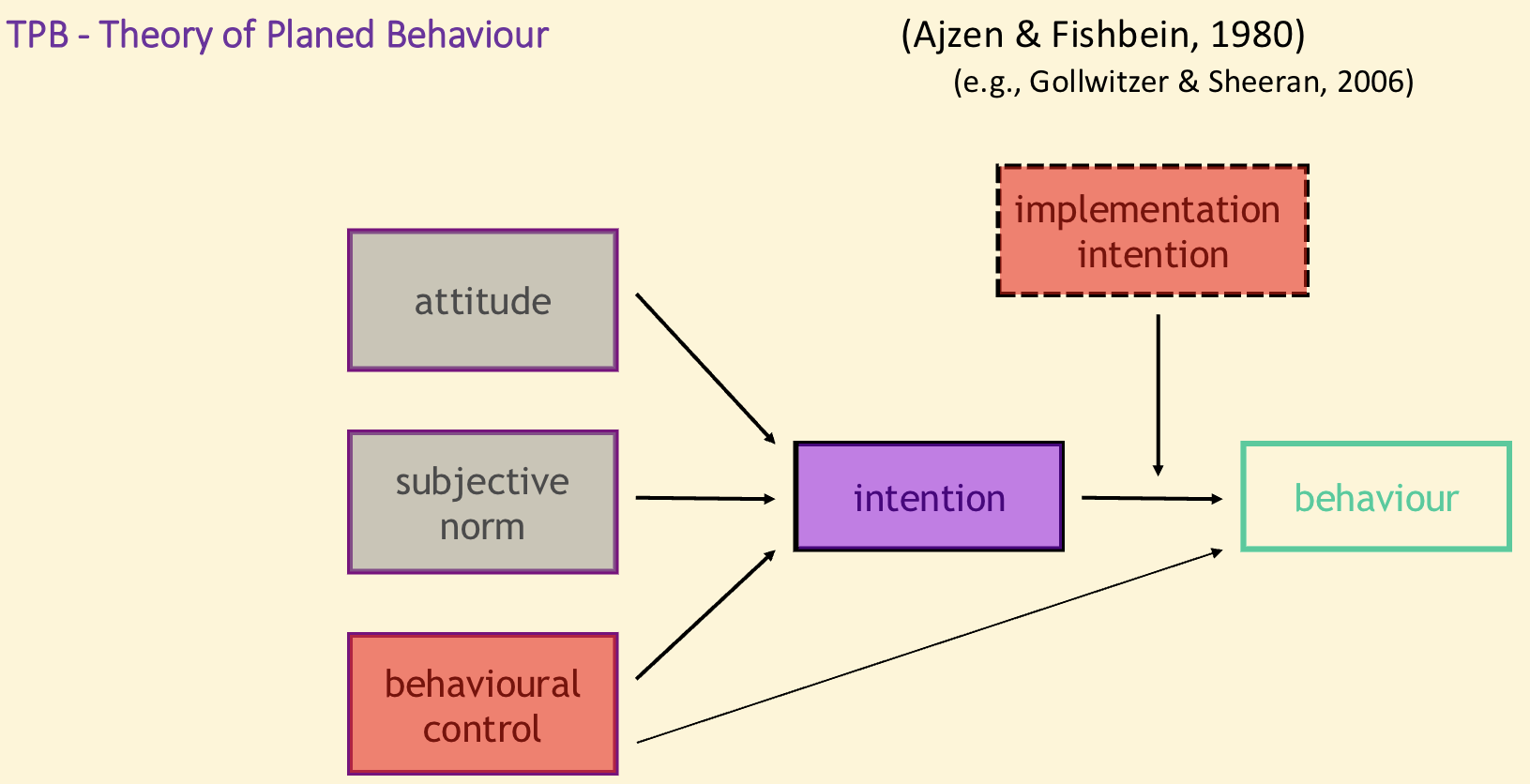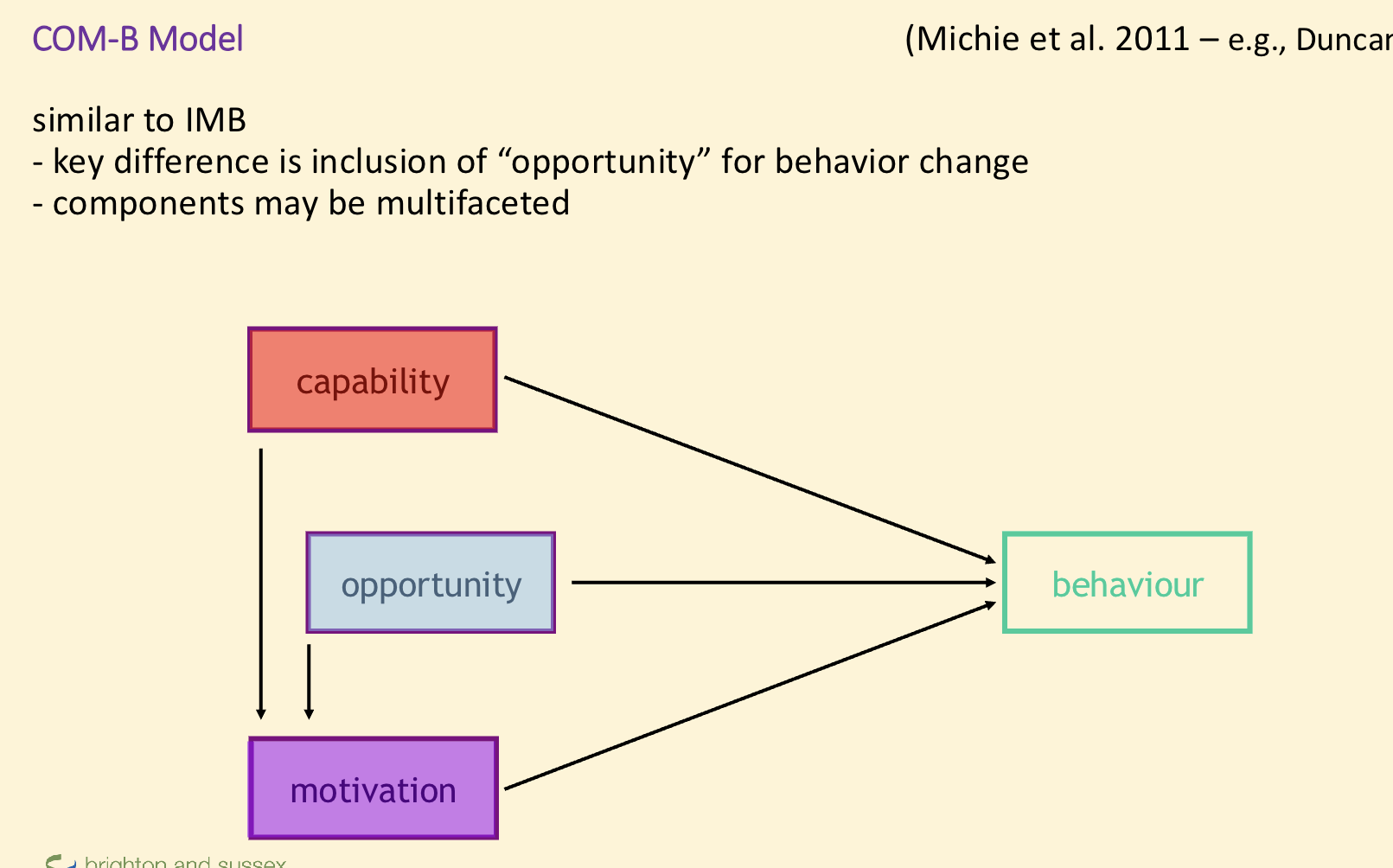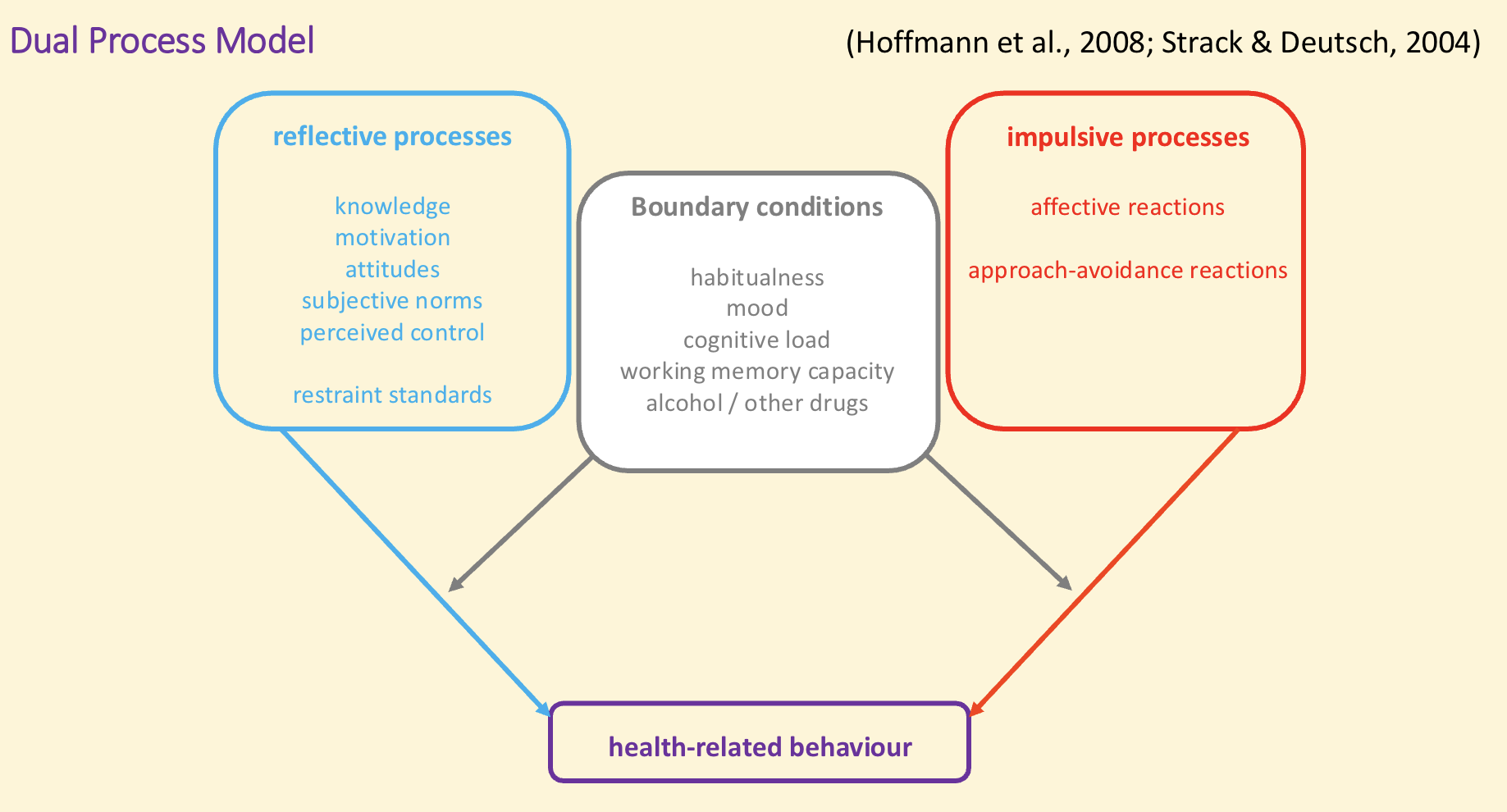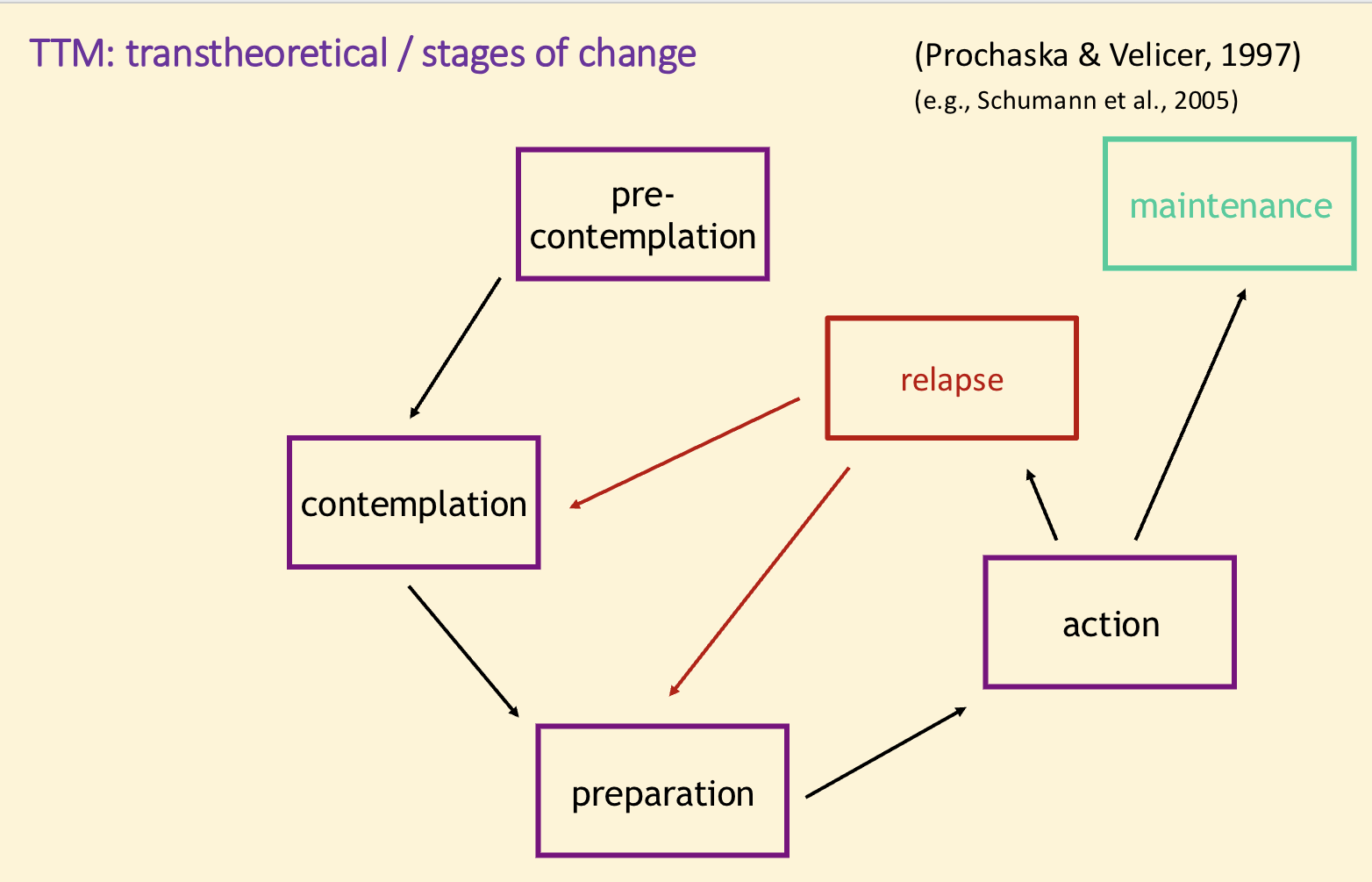T2 L2: A biopsychosocial perspective on health 2
1/7
There's no tags or description
Looks like no tags are added yet.
Name | Mastery | Learn | Test | Matching | Spaced |
|---|
No study sessions yet.
8 Terms
TPB - Theory of Planned Behaviour

COM-B Model

Limitations of COM-B Model and TPB
Models are useful, but they ...
> are probabilistic - cannot explain variation in behaviour
- cannot deal well with ambivalence (e.g., de Visser & Smith, 2007)
> are individualistic - other people affect our actions (Brazeau & Lewis, 2021; de Visser & Smith, 1999)
> are best for - explaining one-off behaviours (e.g., vaccination)
- explaining initial change but not maintenance
> assume planning - do you really do all this just before you - brush your teeth?
- have another drink?
- etc.
Dual Process Model

Transtheoretical

Individual-level interventions
Motivational Interviewing (MI) is a semi-directive, client-centered counseling style involving:
- working to resolve ambivalence
- goal-setting (and monitoring)
- skills development
- enhancing motivation to initiate
and maintain change
(Miller & Rollnick, 2002)
Population- / culture-level interventions
Dry January (de Visser et al., 2016; de Visser & Nicholls, 2020; de Visser & Piper, 2020)
- provides an opportunity
- to conduct ‘behavioural experiments’
- to experience benefits of change
- to develop skills
- to enhance motivation
- to discuss drinking and the role of alcohol in society
(similar principles for “Stoptober”)